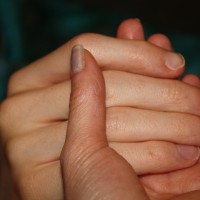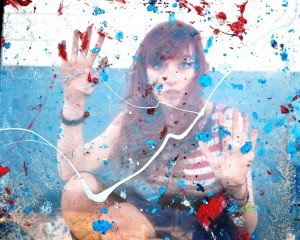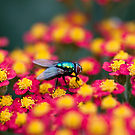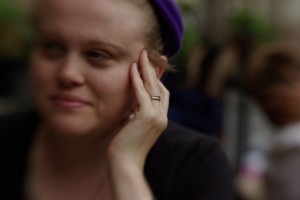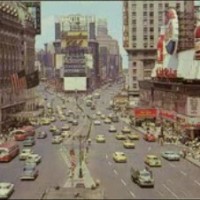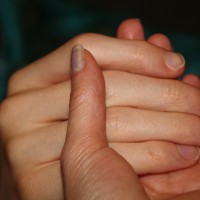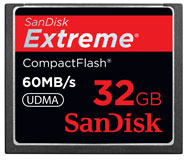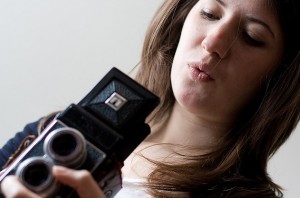
Unless you’ve been living beneath a rock – which I really hope you haven’t been because it seems a bit cold and uncomfortable to me – or on a mission to outer space (you got awesome pictures, didn’t you?), you can’t have failed to notice that Disney’s latest offering, Tron: Legacy hits the screens tomorrow. And it’s bouncing in in an awe-inspiring blaze of 3D glory. Or so we’re meant to think, if we subscribe to the hype. If you’re me, it’s more a shrug of indifference because, dammit, I don’t like 3D.
Really. I don’t like 3D.
Yes, I’m probably supposed to be salivating in star-struck wonderment over the fight scenes and pinned to my seat, hair swooshing behind me, by the realism of the chases, but the truth is, I’m not. I’d much rather be watching it in 2D.
I’m not a miserable technophobic grouch, I promise. Here’s why 3D doesn’t rock my world.
Burning eyes and aching head
My first reason is completely, utterly, and totally personal. And it’s the singular most important one why 3D cinematography and I aren’t getting on. It gives me a headache. Sit me in front of a 3D projection wearing those ridiculous glasses and my eyeballs will begin to pulsate. Before long I’ll think that they are about to canon out of the back of my head in a streaming red and orange arc. I do not want to spend 90 minutes like this. Actually, no, I don’t want to spend even ten minutes like this. If this is supposed to constitute entertainment, then please sign me up for something different.
For a while I thought that I might be some freak of nature whose ocular function was somehow deficient. But, no, I’m not. The more that I ask around, the more that people tell me: ‘Oh yeah, 3D makes my head hurt, too.’ Now in my universe, this does not constitute a good business model. Why persist in making films in a format that will actively deter film-goers when a perfectly acceptable alternative is already being used? If you think I’m going to willfully subject myself to migraine-like symptoms and hand-over my hard-earned pennies to do so, all so that I won’t be able to enjoy a film, you’re from Planet Crazy.
Glasses

The perfect hairband
Then we move on to the glasses. Now, I’m not overly fussed by the aesthetics of wearing 3D glasses. First, I live with sunglasses virtually super-glued to my nose; second, in a cinema, it’s dark. Who’s going see you looking like a human version of Brains from Thunderbirds? (And I’ll tell this for free: they make excellent hairbands.) But going to the cinema shouldn’t be an accessory-dependent experience. Seriously guys, in the grand scheme of cinematography, that’s a retrograde step.
When you consider that the Gerry-Anderson-inspired-glasses also contribute to a 30% loss of colour in your average film, it’s even more regressive. No, it’s not a swing instead of a roundabout, or a small loss for a bigger gain. It’s a third of the sharpness of the imagery being sacrificed for a piece of technology that is supposed to immerse you in the world of the film. But hang on a minute, beautiful cinematography that uses creative camera angles and intriguing depth-of-field, sublime colour, and a tight script well acted will also immerse you in the world of the film. You don’t need 3D to do that.
The Great and the Good
The ever-entertaining and frequently-insightful Mark Kermode also points out that 3D isn’t new technology. It is something that has been pushed on cinema-going audiences since the 1950s (and the first patent for a 3D film was around in the 1890s), but has never caught on. Why, I wonder? Maybe because people who watch films are discerning enough to see that 2D films do what they do really, really well. And why is it being pushed again? Kermode reckons it’s an anti-piracy move.
That’s a good argument, but I can’t help thinking it’s a bit like fashion. Some trendy Shoreditch-type was raiding her Mum’s wardrobe and stumbled on a 1980s retro-tastic jumpsuit. She started wearing it in her infinite fashion-forward-wisdom. And yes, where fashion went, we followed, for five minutes. Then we realised that we looked ridiculous and having to get out of one to have a pee was a Herculean feat. So we consigned them to the ‘Never again’ heaps in our wardrobes, for our daughters to dig them out in twenty years’ time and repeat the sorry cycle.
Martin Scorsese, on the other hand, has been waxing lyrical over 3D. ‘Every shot,’ he says, ‘is rethinking cinema.’ His newest film, Hugo Cabret, is due to be released in late 2011 and has embraced 3D technology to the full. Scorsese points out that we live in 3D, so why can’t we watch films in 3D? Well, I’d hazard because film isn’t real life, it’s film, and 3D gives me a headache.
And if Scorsese wants to sell the aesthetics of 3D like this: ‘But it has a beauty to it also. People look like… like moving statues. They move like sculpture, as if sculpture is moving in a way,’ then he really needs to think again. I’d rather watch realistic 2D people than 3D marionettes, thanks.
Back in its box
So often I hear that 3D is really worth it for one or two scenes in a film, that it makes them stand out far beyond the others. But what about the rest of the film? Is it worth it for that? Does 3D really make for the immersive, spectacular experience that film-makers would have us think? The answer for me is a resounding no.
Until they can find a way to make stereoscopy not induce headaches, not require glasses, and not reduce picture sharpness, it’ll have to remain in the dressing up box, until our kids decide to turn it into a fashion statement. For five minutes.








